
Habitat Control
Habitat, the surroundings of wildlife that provide their basic needs, is the most important wildlife management consideration for any landowner. To manage habitat, it is essential to know how a particular ecosystem functions and how it can be manipulated to benefit chosen wildlife.
Brush Management
All eco-regions of Texas have one or more invasive woody plants with the ability to become overabundant and reduce plant diversity and degrade habitat quality. Brush control methods include mechanical (chainsaw, skid-steer with shears, dozer) and herbicides (foliar, cut stump, or stem spray applications).
Brush management decisions are some of the most important ones a landowner can make. Once a tree is taken out, it can’t be put back in place. Developing clear objectives before brush management efforts begin is important. A brush management plan should also incorporate habitat needs of target wildlife species, most appropriate brush management technique given the invasive species to control, and erosion control issues that may arise from brush management. Lastly, landowners need to decide how best to manage slash (downed brush).
Reseeding
On many properties, years of livestock grazing have removed important grasses and wildflowers. Reseeding is an opportunity to bring these plants back and enhance habitat and improve food and cover sources. Native grasses usually comprise the majority of seed mixes, but perennial forbs can provide essential forage and seed production.
Grazing Management
In areas with productive soils, livestock can be used to prevent excessive grass build-up, increase herbaceous diversity, and improve “patchiness”, essential for quail habitat. Utilizing some type of rotational grazing system can be important to maintain land health in certain circumstances such as improved pastures. Rest periods are important to allow grasses and forbs to recover between grazing periods.
Erosion Control
Erosion control refers to practices that reduce soil erosion for the benefit of wildlife. While erosion is in some ways a natural process, accelerated erosion can lead to loss of needed soil to grow vegetation, increased sedimentation in ponds and streams, and a severe decline in water quality.
Pond Construction
Wildlife exemption rules allow ponds to qualify for erosion control if the design is approved by the NRCS. Special attention must be paid to drainages leading into the pond as well as the spillway as these areas are the most susceptible to soil loss.
Gully Shaping
When erosion in a particular area becomes excessive, gullies will sometimes form. When gullies become too large with excessive slopes, their ability to naturally recover is diminished. One remedy is to utilize machines to smooth the area and then follow up with reseeding to stabilize the site.
Streamside, Pond and Wetland Revegetation
Because riparian areas flood, their tendency to erode can be high. Planting robust, thickly rooted grass species such as switchgrass and eastern gamagrass is one way of stabilizing these areas and ensuring that land/water interfaces do not erode away.
Predator Control
 While non-natives predators such as feral hogs and red imported fire ants almost always have negative impacts to wildlife, the role of native predators is less one-sided. For example, throughout much of Texas where white-tailed deer populations are overabundant, predators can play an important role in controlling their numbers. However, populations of many native predators such as raccoons and brown-headed cowbirds are artificially high and do have negative impacts on other wildlife.
While non-natives predators such as feral hogs and red imported fire ants almost always have negative impacts to wildlife, the role of native predators is less one-sided. For example, throughout much of Texas where white-tailed deer populations are overabundant, predators can play an important role in controlling their numbers. However, populations of many native predators such as raccoons and brown-headed cowbirds are artificially high and do have negative impacts on other wildlife.
In many cases, wildlife activities such as feeding and adding water sources can increase the number of predators. The placement of varmint traps around corn and protein feeders is often recommended. Landowners should be aware of unintended consequences of predator control. For example, quail and turkey managers may find that removal of coyotes results in increased raccoon and skunk populations, both of which are more efficient quail and turkey predators than coyotes.
Red Imported Fire Ant Control
These non-native invertebrates have deleterious effects on songbirds, small mammals, invertebrate species, and nearly all ground-nesting wildlife. Control is usually conducted through the use of baits, with an emphasis on not treating important native ants.
Feral Hog Control
Brown-headed cowbird control. These nest parasites greatly reduce nesting success of native songbirds. Control of cowbirds is often accomplished by traps.
Supplemental Water
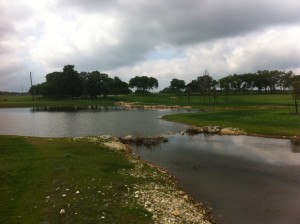 This activity refers to providing water for wildlife in addition to natural water sources such as creeks and rivers. On many properties, abundance of water is a limiting factor and for wildlife such as ducks, water is an absolute necessity.
This activity refers to providing water for wildlife in addition to natural water sources such as creeks and rivers. On many properties, abundance of water is a limiting factor and for wildlife such as ducks, water is an absolute necessity.
Ponds are a common activity and vary greatly with respect to size, shape, dam construction, and liner material. Clay and clay bentonite are often used to line pond bottoms. In areas with fractured substrates (such as the Texas Hill Country), plastic liner (PVC or EPDM) are often used. When plastic liners are utilized, compacted soil is placed on top of the liner for protection. Oftentimes, gullies can be constructed to route additional water into ponds.
Rainwater Collection Systems
For areas of the property without well water, rainwater collection systems (also known as guzzlers) are a great way of providing supplemental water. The system designed below has a 96 square foot roof and captures over 55 gallons of water for every inch of rain. These systems can be placed anywhere on a property, and are one of the least expensive ways to greatly improve water distribution. 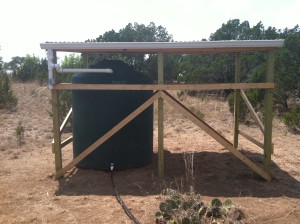
Livestock Trough Overflow/Modification
Modifications can be made to existing troughs to facilitate access by wildlife and prevent drownings. Rocks, tree branches, and wire panels are often utilized to create ramps on both the inside and outside of livestock troughs.
Supplemental Food
All habitats have natural food sources available. When landowners provide supplemental food, they make additional sources available for wildlife above and beyond what is naturally provided by natural habitat.
Feeders
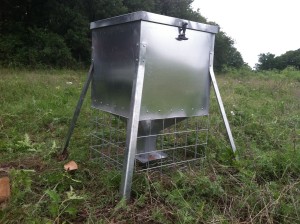
The use of feeders is a very common activity of deer, turkey, and quail managers. Appropriate feed should be used (protein for deer, not corn) and density of feeders should be high enough to have a positive impact on target wildlife species.
For deer, important times to feed include during the fawn rearing and antler growing period (late spring and summer). Winter feeding is highly recommended as it can reduce buck mortality following the stressful rut period. In order to qualify under wildlife valuation guidelines, feeders should be free-choice.
Food Plots
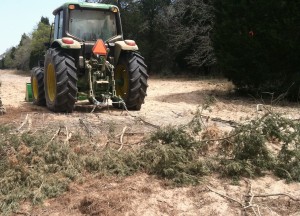 Planting annual and/or perennial forage plants is often done to increase available nutrition for deer, turkey, and dove. Food plots almost always require the use of heavy equipment (tractor, disc, drag harrow, etc.). Seeds should be lightly covered.
Planting annual and/or perennial forage plants is often done to increase available nutrition for deer, turkey, and dove. Food plots almost always require the use of heavy equipment (tractor, disc, drag harrow, etc.). Seeds should be lightly covered.
Sunflower, millet, milo, cowpeas, sunflowers, winterpeas are great annual plants to use throughout much of Texas. Sunflowers have the ability to regenerate if initial seeding success is good.
Popular perennial food plot items include Illinois Bundleflower, BeeWild Bundleflower, engellman daisy, bush sunflower, and Maximillian sunflower. As a rule, perennials do not have the yearly production of annual food plots, but significantly less maintenance is required after initial establishment.
Strip Discing
Strip discing is the practice of dragging a heavy disc behind a tractor to cause soil disturbance. This practice disturbs the soil and helps promote forb growth. Forbs are an important food component for deer, quail, and many birds. Discing also helps create bare areas for quail to travel. This practice should not be conducted during the breeding season of ground-nesting birds (March-August).
Supplemental Shelter
In addition to food and water, shelter is an essential component of wildlife habitat. While well-managed properties often have sufficient cover, lack this habitat component. As a result, adding supplemental shelter can greatly aid native wildlife.
Nest Boxes
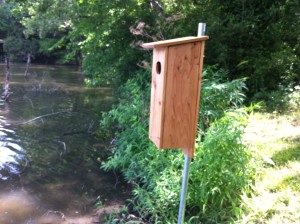 Many of Texas’ most abundant birds including wrens, chickadees, bluebirds, and titmice readily utilize nesting boxes. In addition, Wood Ducks and Black-bellied Whistling Ducks readily use nest boxes when placed in appropriate habitat.
Many of Texas’ most abundant birds including wrens, chickadees, bluebirds, and titmice readily utilize nesting boxes. In addition, Wood Ducks and Black-bellied Whistling Ducks readily use nest boxes when placed in appropriate habitat.
Nest boxes for songbirds can be placed on trees or on poles, 4-6′ off the ground. Boxes placed in open habitats should face northeast to minimize sun exposure. Owl boxes should be erected at least 10′ off the ground. Care should be made to ensure that all birds have easy access into and out of the box entrance.
Brush Piles
In areas lacking low-growing shrubs, brush piles can be created to increase escape cover for small mammals and birds. Brush piles are a common practice for quail managers.
Tree Plantings
Many properties lack diverse tree populations due to previous clearing or excessive browsing by deer and/or livestock. Native trees can be planted to increase cover and food sources. Tree species should be chosen based on several factors including ecological region, soil texture, moisture availability, and target wildlife species.
Census
This activity involves periodic counts of wildlife to determine species abundance, diversity, sex ratios, and/or population trends. Census counts can include point counts, walking transects, driving counts, or even remote camera photography. The chosen technique should be species appropriate and performed to recommended levels.
Spotlight Surveys (Deer)
Spotlight surveys, conducted roughly one hour after sunset, involve the use of a vehicle with powerful lights to count deer along a predetermined path. Area covered during the survey is used along with the total number of deer seen to estimate deer density.
Remote Camera Surveys (Deer)
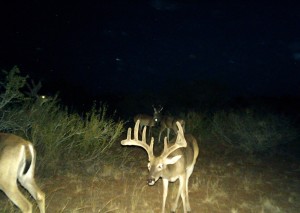
“Deer cameras” have become a powerful tool to survey deer populations, particularly on habitats too dense to conduct more traditional spotlight surveys. Cameras are run for a set period (10-14 days) and each photo is analyzed. The number of bucks is identified and estimates of does and fawns are determined from buck:doe and buck:fawn ratios from all photos taken within the survey period.
Songbird Surveys
For landowners managing songbirds, semi-annual (spring and winter) or annual (spring) bird surveys are a popular tool to monitor changes in abundance and diversity of their land’s bird populations. Interestingly, most birds are first observed audibly, not visually, making bird song recognition essential for this practice.
Landmark Wildlife is happy to help you with these and other wildlife management activities. If you have questions, please feel free to call us at 512.906.9491.





